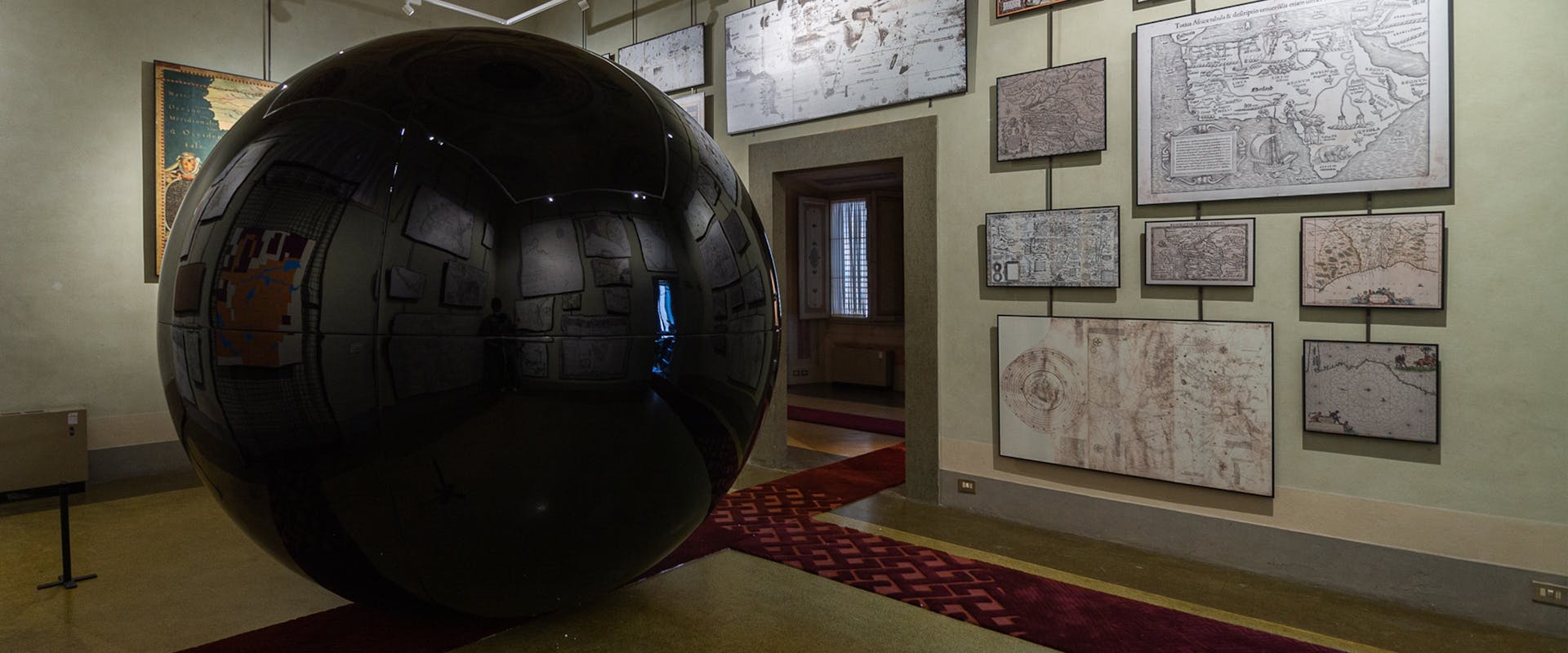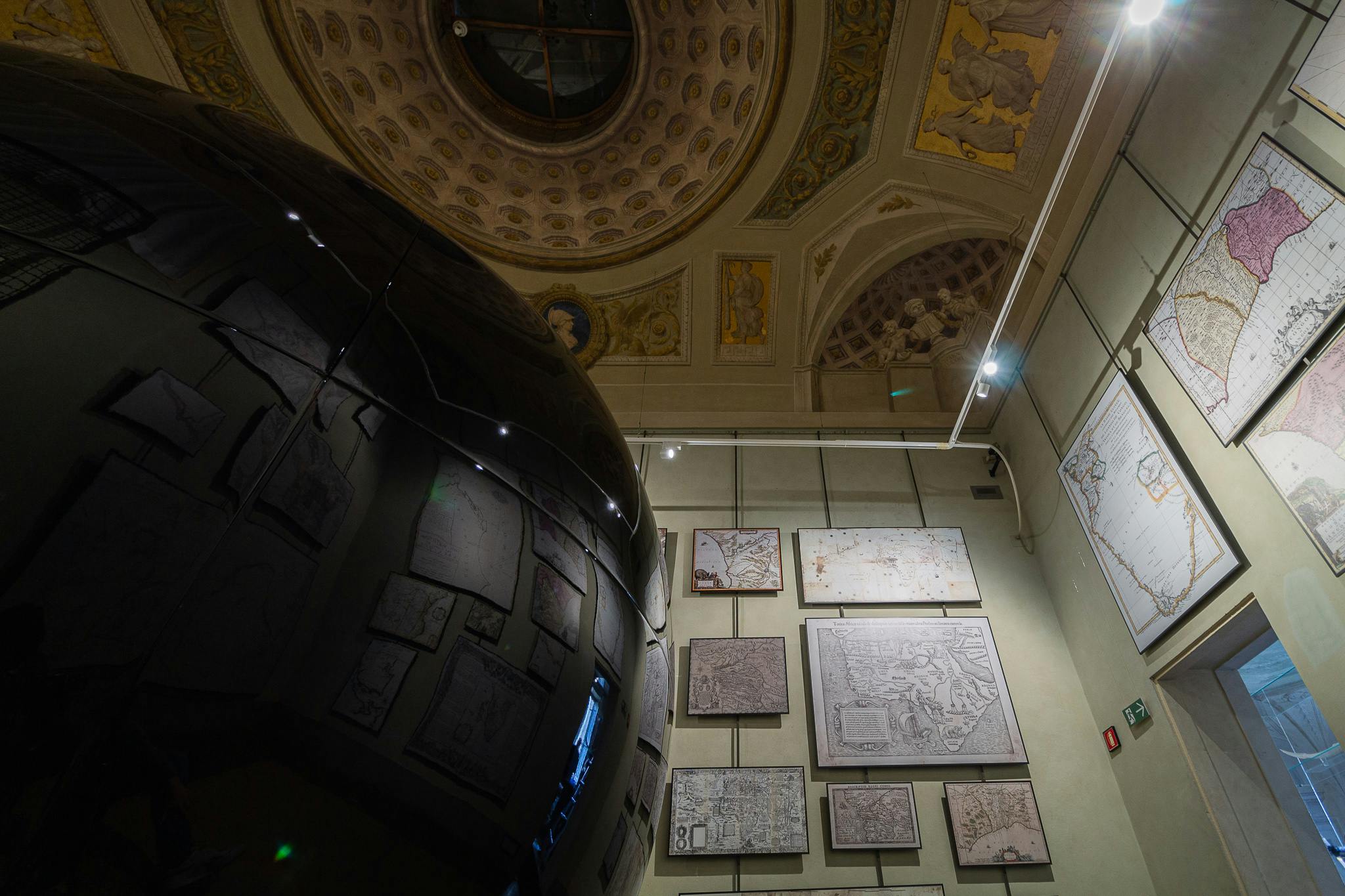The History of the Kingdom of Congo in the Medicean residence of Palazzo Pitti: Sammy Baloji's installations tell the tale
The exhibition reopens 6 September in the rooms of the Andito degli Angiolini.
The rooms of the Andito degli Angiolini in Palazzo Pitti host K(C)ongo, Fragments of Interlaced Dialogues. Subversive classifications, Sammy Baloji's first solo exhibition in Italy. The exhibition project, curated by Lucrezia Cippitelli, Chiara Toti and the collective BHMF, constitutes the culmination of a research project initiated by the artist in 2016 from the collections of various museums around the world, including the Medici palace.
In the exhibition - enriched by the creation of two new site-specific artworks for the rooms of the Andito degli Angiolini, Palazzo Pitti - motifs and narratives intertwine, drawn from objects that arrived from the Kongo Kingdoms (today's Democratic Republic of Congo, Republic of Congo and Angola) starting in the 16th century, now stored at Palazzo Pitti and in other museums.
The artist's works are linked to archival materials and relevant artifacts from the Kongo on loan from the Museo di Antropologia e Etnologia of Florence, the Museo delle Civiltà of Rome and the Uffizi Galleries.
The common thread running through the entire exhibition, which covers seven rooms, is an 88-metre-long carpet (The Crossing), designed and manufactured specifically for the rooms of the Andito degli Angiolini, whose decoration stems from the geometric motifs and circular bands of four precious Kongo oliphants (inlaid ivory ceremonial trumpets) exceptionally brought together in the exhibition: three of them come from the Tesoro dei Granduchi of Palazzo Pitti, while one has been granted on loan for the occasion from the Museo delle Civiltà in Rome. These splendid objects - two of which have been in the Medici collections since the sixteenth century - mark the ending point of a journey emphasising, room after room, the complexity of such" interlaced dialogues" between Kongo, Renaissance Europe and Modern Europe.
With the immersive installation Gnosis, inspired by the Sala delle Carte Geografiche (Maps Room) in Palazzo Vecchio, Sammy Baloji explores the concept of the Wunderkammer, thereby contextualising both Renaissance collections of mirabilia and naturalia and the emergence of modern anthropological and ethnographic museums in Italy.
Some sculptures, on loan from the Museo di Antropologia e Etnologia of Florence, came from the Belgian Congo and arrived in Italy at the beginning of the 20th century.
The letters of King Afonso I of Kongo to the Portuguese king Manuel I, as well as Baloji's copper and bronze plates Negative of Luxury Cloth and the loom-sculpture Goods Trades Roots (in which the geometric patterns recall the precious raffia fabrics that arrived in Italy in the 16th-17th century through Portuguese merchants), exemplify an equal and horizontal relationship between Europe and Africa, which overturns the narrative that later became predominant.
The exhibition highlights a "subversive" profile of Kongo's artworks, which go beyond modern "exotic" or "ethnographic" classifications, a legacy of the transatlantic slave trade and the Scramble for Africa of the late 19th century, whose implications conflict with contemporary cultural perceptions and values.
The artist Sammy Baloji: "I'm not interested in colonialism as nostalgia, or in it as a thing of the past, but in the continuation of that system".
Director of the Uffizi Galleries Eike Schmidt: "Historical research reveals that our perception of objects and works belonging to different cultures has been - and in many cases still is - biased in a negative sense. Sammy Baloji's art, on the other hand, shows us a different path to follow through the discovery of the past's truth and the recovery of horizontal relations between cultures. In this perspective, his artworks become political in the highest meaning of the term".
Sammy Baloji
Sammy Baloji lives and works between Lubumbashi and Brussels. His journey, which began in 2005 with the photographic documentation of the modern buildings in his hometown, has also evolved into a research and visual production flanked by Picha, a collective of artists and cultural professionals with whom he founded the Lubumbashi Biennale and the Picha art centre in 2008. His work explores the memory and history of the Democratic Republic of Congo concerning global history, bringing out within the dense network of relationships a complexity that affects and profoundly revises modern European history. Starting from the research on the cultural, architectural and industrial heritage of the Katanga region, Baloji's work reinterprets the impact of colonisation, highlighting how, from the contemporary.

